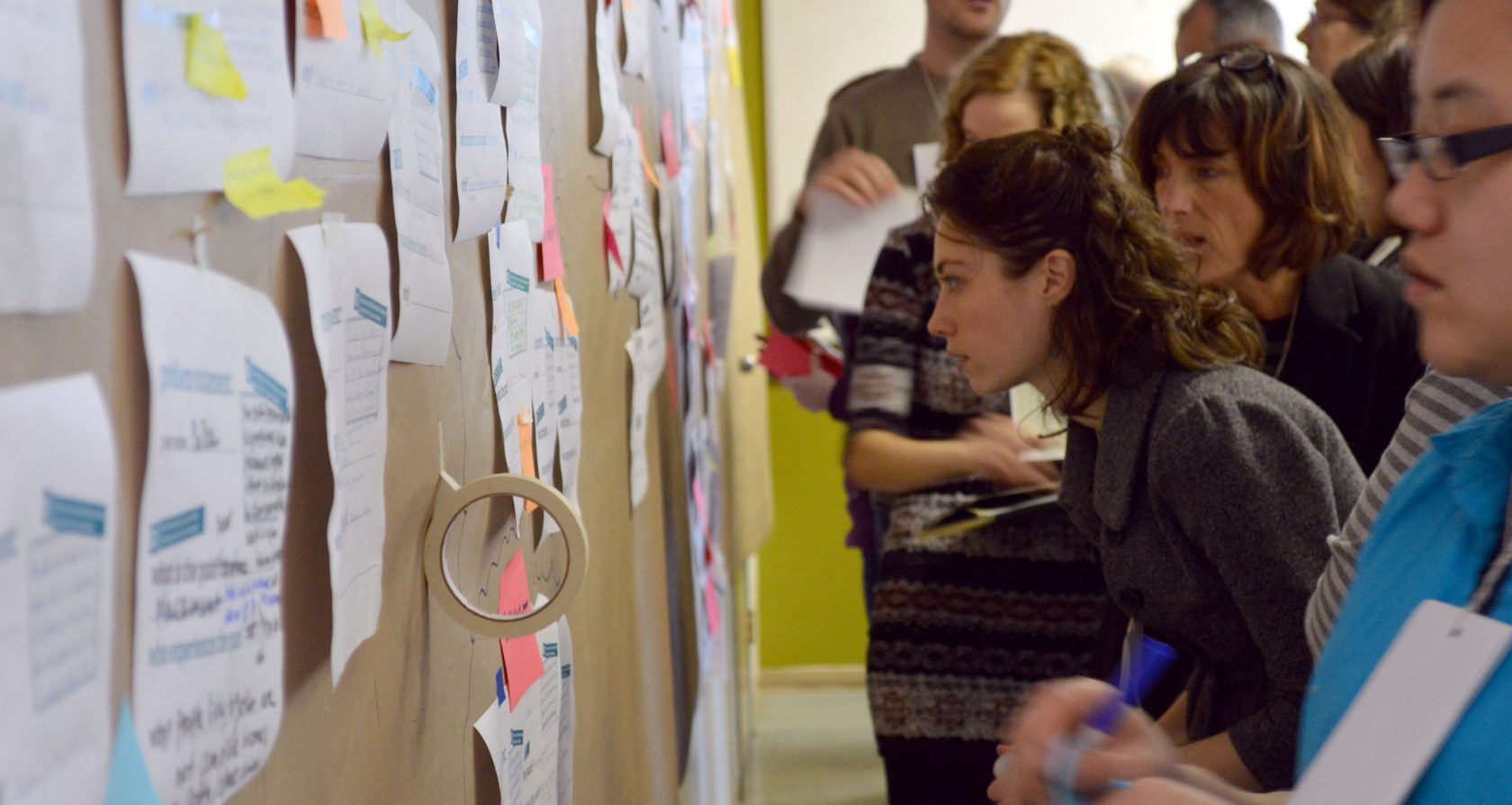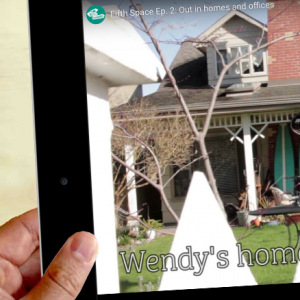

Component parts
- A mobilization campaign. Because social service workers are distributed across program sites, we developed pop-up experiences and a mobile advertising campaign to find unusual suspects. This meant developing a talent spotting process and a set of criteria for selecting staff.
- A physical space. Staff from across agencies convened each week in a creative workshop. A large meeting room was re-purposed to enable team working, drawing, making, and filmmaking.
- A curriculum & coaching practice. We created 24 modules of content, covering problem framing, research design, segmentation, idea generation, theory making & testing, visualization, prototyping, evaluative design, and storytelling.
- A new incentive. To incentivize trial, error, and learning we instituted the Fail Forward Award. The team who failed the most and learned the most receives the prize at a special ceremony.
Fifth Space was a one-time prototype. The lessons from the Fifth Space are directly informing the design of Grounded Space: the Social R&D Collective.
Pain points
Fifth Space responds to a recurring challenge: how to shift staff practice when existing roles, routines, and culture leave little room for ground-up change? Interviews with staff helped us identify the structural barriers to building staff capacity.
A one-off training workshop was unlikely to stick. Staff needed experimentation to be baked into their role and responsibilities. And they needed to see experiential practice modeled, and rehearse what that looked like for their own practice.
Research & impact
Fifth Space was inspired by international practice. We looked at how 3M, Google, Facebook, Amazon, and other innovative companies engender a culture of staff creativity and problem-solving.
Modeling and rehearsal is the change mechanism at play. Staff see other peers using the approach, and are given time and space to try.
Model and rehearse
Modeling and rehearsing is used within informal social networks to ‘teach’ or ‘pass along’ behaviors. It’s about showing, rather than telling.
Psychologist Albert Bandura writes: “In actuality, virtually all learning phenomena resulting from direct experiences can occur on a vicarious basis through observation of other people’s behavior and its consequences for them. Man’s capacity to learn by observation enables him to acquire large, integrated units of behavior by example.”
To learn more about behaviour change mechanisms, read our white paper.
- 51 staff from across three agencies applied for The Fifth Space; 30 staff were selected; and 27 staff committed to a 6-month prototype.
- 6 interagency teams formed to tackle 6 problem areas.
- 5 solutions moved from idea to prototype. See all of the solutions here.
- 1 solution is now in implementation.
- 90% of Fifth Space participants say they gained fresh insights into their user group, but only 33% report trying to bring the thinking and methods back into their everyday roles.
Team & partners
The Fifth Space was a partnership between Burnaby Association for Community Inclusion, posAbilities, and Simon Fraser Society for Community Living. Community Living British Columbia enabled staffing flexibility.
Behind the Fifth Space was a pretty tireless team: Manuela Aguirre, Matthew Lowell, Charlotte Secheresse, Jonas Piet, and Sarah Schulman. Rheanna Toy was our documentary filmmaker.



